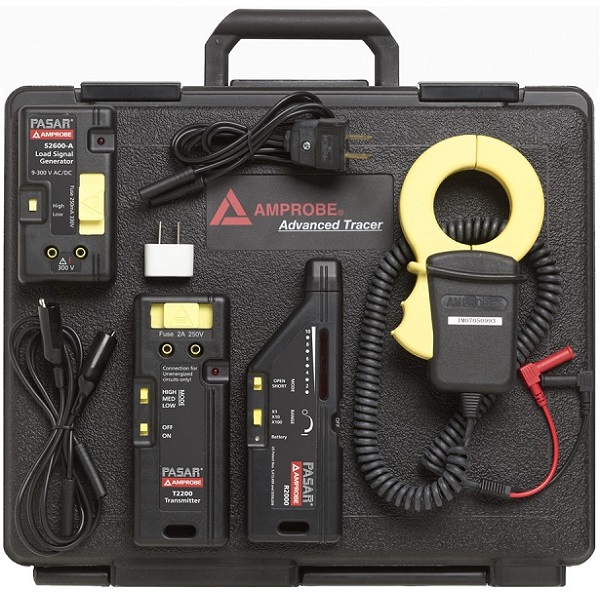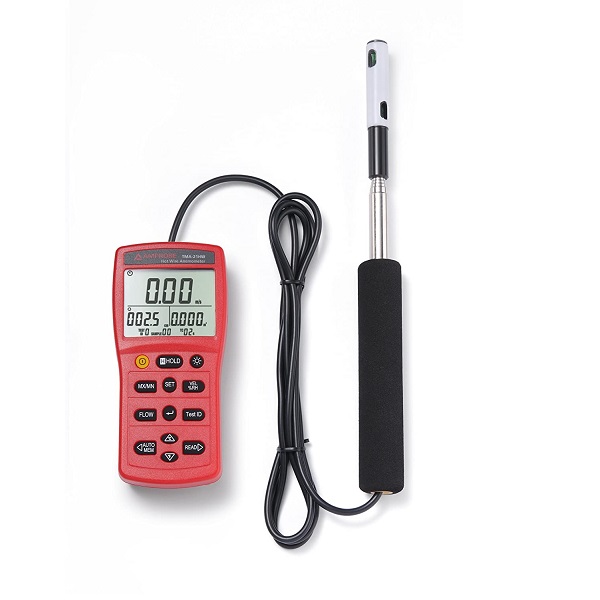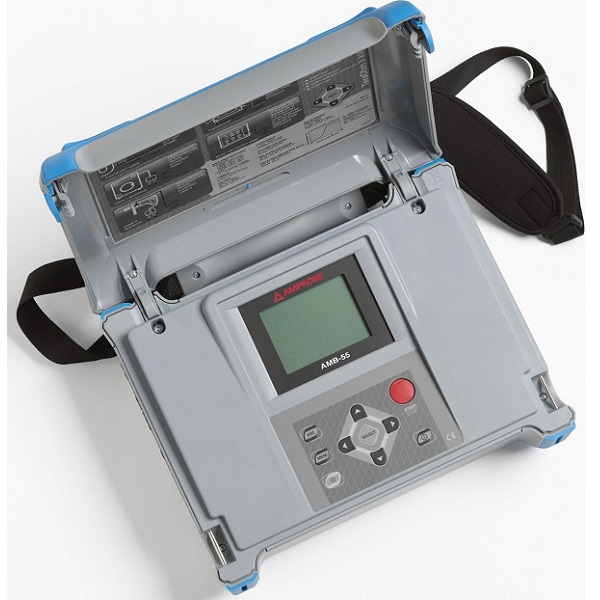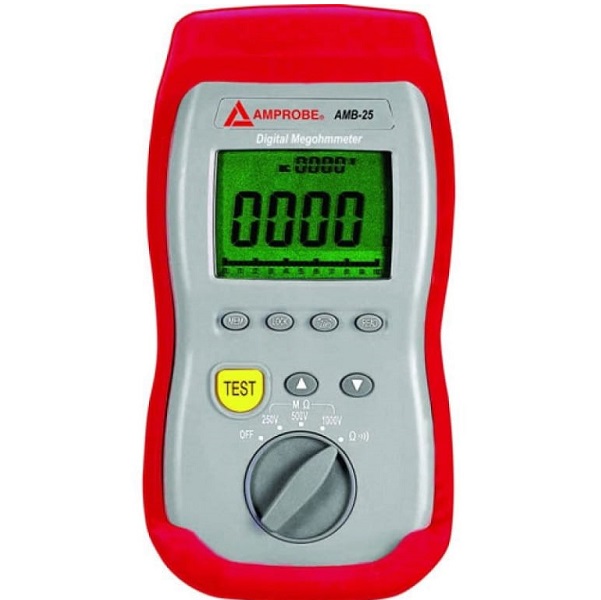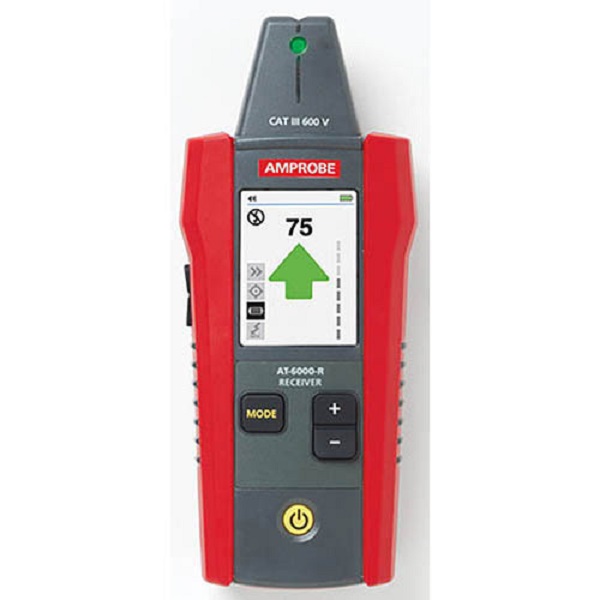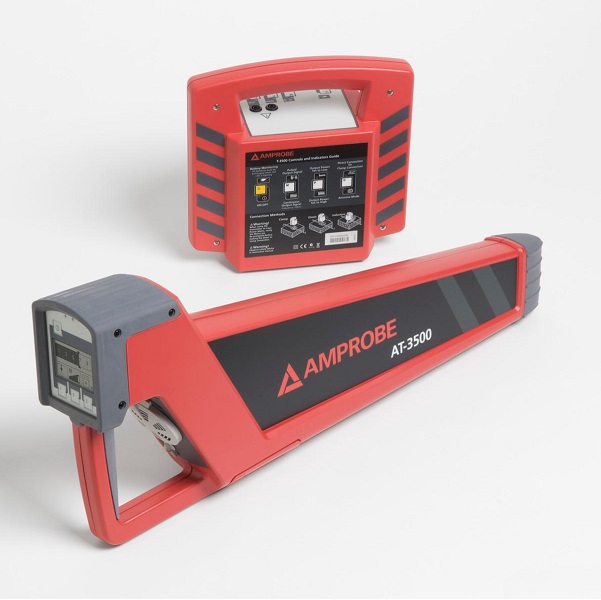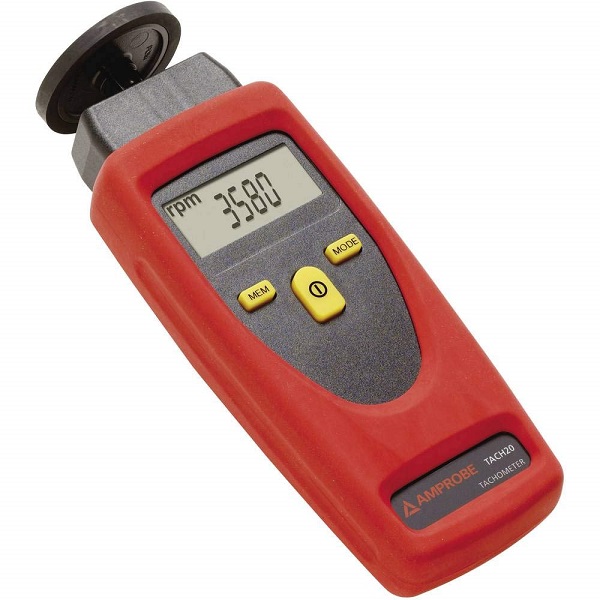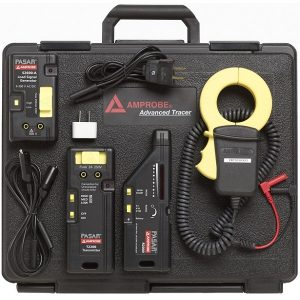| Content | With the Amprobe AT-2004-A Wire Tracer you can trace live, de-energized, or open (broken) wires buried behind walls up to 13 feet (4 m) thick, without interrupting power. It?s a great choice for finding wires in walls, locating breakers, neutrals, and ground lines, and zeroing in on shorts, ground faults, and broken wires. This electrical wire tracer doesn?t interfere with sensitive electronic equipment so it?s safe to use in data centers. | The Amprobe TMA-21HW Hotwire anemometer technology eliminates the use of bearings and rotating parts. When compared to standard bearing type probes, the compact Amprobe hotwire sensor is more reliable (no mechanical moving parts) and allows for easier access to duct and confined spaces. The Amprobe TMA-21HW Hotwire anemometer measures air flow volume and velocity, it features a telescopic probe for positioning the sensor, and is used by HVAC/R technicians to measure wind flow and temperature in air conditioning systems. | Eliminate downtime, predict the lifetime of equipment and reduce safety hazards with the Amprobe AMB-55 Insulation Resistance Tester that tests voltage and step voltage to 5,500 V. You can accurately test cables, transformers, motors, surge arrestors and generators in noisy environments such as high voltage switchyards. It also boasts built-in noise rejection filters and shielded test leads to provide high EMI immunity | This affordable and rugged megohmmeter is fast and easy to use, and offer the features you need for most insulation test applications including wires, cables, transformers and motors. | The AT-7020 Advanced Wire Tracer kit includes the AT-7000-R Receiver and the AT-7000-T Transmitter. The Receiver includes Amprobe?s patented Smart Sensor feature to instantly display the location and orientation of energized wires in walls, floors, and ceilings. You can clearly see the direction of the wire on the large, bright TFT LCD full color display. In hard-to-reach areas, you can use the Receiver?s Tip Sensor to trace wires in corners, tight spaces and junction boxes. The Transmitter offers two automatically-selected frequency modes for optimal tracing on energized and de-energized circuits, and three power modes (high, low, clamp) for a variety of environments. The breaker mode?s Scan and Locate feature identifies the one correct breaker or fuse with the highest recorded signal, thus eliminating the confusion of multiple false positives common with older technology tracing tools. So whether you?re a novice user or an expert, this Amprobe circuit tracer kit will help you get the job done fast. | Like the AT-2004, the Amprobe AT-2005 Wire Tracer traces live wires buried or hidden behind walls up to 13 feet (4 m) thick without interrupting power. However, the AT-2005 electrical wire tracer also includes a battery booster that strengthens the signal for more accurately tracing opens and finding wires in walls. The AT-2005 is used for quickly locating breakers, broken wires, neutrals, grounds, shorts and pinpointing ground faults. |

